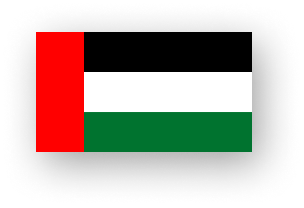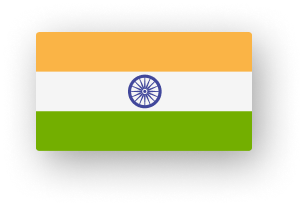How to Develop a Game Like Omori in 2025
Omori is a pixel-art psychological horror RPG developed by OMOCAT using RPG Maker. Its emotional story, stylized visuals, and unique combat system made it a cult indie hit.
If you’re looking to build a similar game, this guide walks you through game design, features, technology stack, cost, and challenges involved in creating an Omori-inspired title.




















Why Is Omori So Popular Among Indie Gamers?
Omori has captured the hearts of indie gamers worldwide, not just for its unique gameplay mechanics but for the emotional depth and artistry woven into every frame. Developed by OMOCAT, this psychological horror RPG became a cult classic thanks to its ability to merge compelling storytelling with immersive pixel-art aesthetics a combination that resonates deeply with fans of narrative-driven games.Here’s why Omori stands out in the indie RPG scene:
- Raw, Emotionally Relatable Storytelling
- Innovative Emotion-Based Combat System
- Distinctive Art Direction and Visual Language
- Atmospheric Soundtrack and Audio Design
Must-Have Features in a Game Like Omori

Emotion-Based Combat System
Omori’s emotion-based combat system lets players use Angry, Sad, and Happy states strategically in a rock-paper-scissors style mechanic.

Branching Narrative
Player choices in Omori impact relationships and story outcomes, leading to multiple emotionally-driven endings and high replay value.
Pixel Art & Hand-Drawn Visuals
Omori combines nostalgic pixel graphics with expressive hand-drawn cutscenes to deepen emotional storytelling and artistic immersion.

Memory Flashbacks
Interactive flashback sequences in Omori reveal hidden trauma and backstory, enhancing psychological depth and player connection.

Hidden Side Quests
Exploring Omori’s world unlocks secret quests and characters that add emotional lore and reward players with deeper narrative layers.

Dual-World Design
Omori features a dual-world structure where players shift between a colorful dreamscape and a bleak reality, reflecting deep psychological storytelling.
Technologies We Use to Develop a Game Like Omori
We use advanced game engines, pixel art tools, and interactive storytelling frameworks to build Omori-like RPGs. Our tech stack ensures emotional depth, smooth gameplay, and cross-platform compatibility.
Programming Languages
- Python
- JavaScript
- C++
Databases
- PostgreSQL
- MongoDB
- Redis
Front-End Development
- React.js
- Unity UI Toolkit
- Flutter
Integration Tools
- Firebase
- Socket.IO
- RESTful APIs / GraphQL
Development Frameworks
- Unity
- Unreal Engine
- Node.js + Express
Cloud Infrastructure
- AWS
- Azure PlayFab
- Google Cloud Platform
DevOps and CI/CD Tools
- Git
- Jenkins
- Docker
Security Protocols
- OAuth 2.0
- SSL/TLS Encryption
- JWT
Ready to Build Your Own Omori-Style Psychological RPG
Let our expert game developers turn your vision into a powerful, emotion-driven RPG experience. From concept to launch, we handle narrative design, pixel art, emotion-based combat systems, and more.

Omori’s Art Style and Game Design Approach
The Dream World in Omori features pastel colors, whimsical NPCs, and surreal pixel environments. It symbolizes escapism, childhood memories, and emotional comfort in psychological RPG design.
Omori’s Real World is defined by muted colors, lonely rooms, and somber tones. This setting reflects emotional trauma, guilt, and mental isolation through minimalist pixel visuals.
Omori uses a mix of pixel art, symbolic level design, and limited color palettes to convey deep emotional themes. These visual techniques enhance storytelling in psychological horror RPGs and build immersive player experiences.
Turn Your Vision Into the Next Omori-Inspired Masterpiece

Development Time & Cost to Create a Game Like Omori
| Feature | Basic MVP | Mid-Level | Full-Scale (Omori-like) |
|---|---|---|---|
| Cost | $20K – $30K | $35K – $60K | $80K – $150K+ |
| Story Depth | Simple questline, basic dialogues | Branching dialogue with character arcs | Psychological narrative with multi-ending support |
| Visual Style | Basic 2D pixel art scenes | Custom pixel assets with animations | Dual world visual themes (pastel/dark), animated cutscenes |
| Combat System | Turn-based combat with 3 stats | Emotion-based turn system (Happy/Sad/Angry) | Advanced battle mechanics, enemy AI, emotion logic system |
| Exploration | Single environment or map | Multi-zone navigation with portals | Dream world + real world zones, puzzle integration |
| Audio & Music | Free/open-source music | Custom BGM for scenes and battles | Emotion-reactive music and ambient SFX like Omori |
| Art Direction | Basic tileset and sprite edits | Original sprites and environmental assets | Whimsical and melancholic dual-style art, hand-drawn cutscenes |
| Game Engine | Unity 2D / RPG Maker | Unity with plugins or Godot | Custom Unity/Unreal setup with shaders + scripting |
| Save System | Manual save points only | Auto-save and manual support | Scene-based autosaves, slot system |
| Testing & QA | Internal testing | Device testing + user feedback | Complete QA cycle with regression + bug reporting tools |
| Platform Support | PC only | PC + Android | PC, Console, Android, iOS cross-platform support |
Challenges In Developing A Psychological Horror RPG

Narrative-Emotional Balance
Balance emotional intensity, story pacing, and character development to create an immersive psychological horror RPG experience like Omori.

Multi-Ending
Logic
Designing a branching storyline with multiple endings involves complex logic trees, consistent character arcs, and replayability.

Emotion-System Design
Implementing emotion-driven mechanics like Omori’s Happy, Sad, Angry system requires seamless integration with combat, dialogue, and visuals.

Mental State Visual Design
Use color palettes, surreal environments, and visual contrasts to reflect a character’s psychological state in narrative-driven RPGs like Omori.
Monetization Strategies for Omori-like RPG
Steam Sales
Kickstarter Crowdfunding
Itch.io Distribution
Downloadable Content
Merchandising
Bundle Sales & Game Jams
Success Stories from Our Happy Clients
From indie creators to gaming studios, SDLC Corp empowers developers to build story-rich, emotionally immersive RPGs like Omori. Our game development services deliver creativity, scalability, and narrative depth driven by expert teams and cutting-edge design tools.

SDLC Corp delivered outstanding game development support for our Omori inspired RPG project. Their expertise in emotion based gameplay, narrative design, and pixel art helped us build a psychologically immersive RPG on time, with no compromises on quality or creativity.
Overall Satisfaction

We chose SDLC Corp to develop our Omori-style psychological horror RPG, and they delivered flawlessly. Their team ensured smooth development, seamless emotional storytelling, and a fully immersive gameplay experience on par with top indie RPG standards.
Overall Satisfaction

Overall Satisfaction
Contact Us
Let's Talk About Your Project
- Free Consultation
- 24/7 Experts Support
- On-Time Delivery
- sales@sdlccorp.com
- +1(510-630-6507)
How Much Does It Cost To Develop A Game Like Omori?
The cost to develop an Omori-style psychological RPG typically ranges from $25,000 to $100,000+, depending on features, team size, and platform support.












